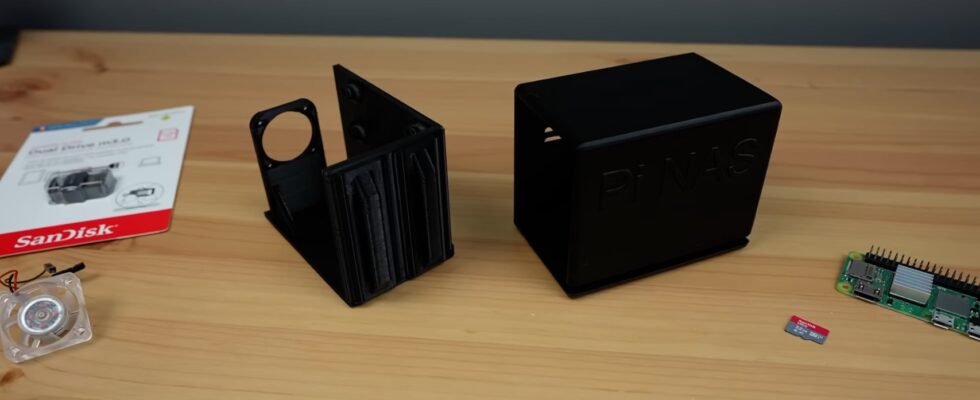When you don’t have money, you often have ideas… like creating a real NAS for only 35 dollars (and also a bit of inventiveness). The result is certainly minimalist, but perfectly functional.
Creating a NAS from a Raspberry Pi is nothing exceptional, doing it with a budget limited to only 35 dollars (all included) is already much more difficult. Yet this is what YouTuber Michael Klements managed to do. Helped by a 3D printer to make the case, the videographer managed to stick to his budget by relying on a minimalist configuration.
The bare necessities… for a basic NAS
To carry out this project, the interested party did not base himself on a Raspberry Pi Zero (5 dollars) or on a Pi Zero W (15 dollars), but on the new Pi Zero 2 W, more recent, and him also, offered at $15. Its advantage? Offer practically the same computing power as a Raspberry Pi 3 but with a compact format. Perfect for this project.
On the storage side, Michael Klements was forced to cheat a bit to avoid fees. Instead of opting for an SSD, which was too expensive for his project, he preferred to buy a simple 128 GB USB-C key for 12 dollars (enough to store the essentials), as well as a 32 GB micro-SD card. for about $6. The latter is used for the installation of the OS.
We then arrive at 33 dollars in total. The remaining 2 dollars of budget is spent on buying a small fan and a mini heatsink at very low prices on AliExpress (less than a dollar for both), and the plastic wire (PLA) used to 3D printing of the case and which, for its part, required 19 hours.
What about the software?
In this case, the 3D case was designed especially to be able to house the Raspberry Pi Zero 2 W and the small fan at the back (connected to the Pi using the 3.3V pins of its GPIO). The latter allows a small flow of air inside the case. Coupled with the mini heatsink applied to the Pi, it suffices to properly cool the device.
On the system side, finally, Michael Klements opted for Raspberry Pi OS Lite, relevant for servers. Thanks to Raspberry Pi Imager, the Youtuber was also able to enable SSH access and Wi-Fi access on the Pi Zero 2 W. Last step of the project: the installation of OpenMediaVault, an application that allows Easily create network storage devices through a web interface.
Source : Tom’s Hardware

22